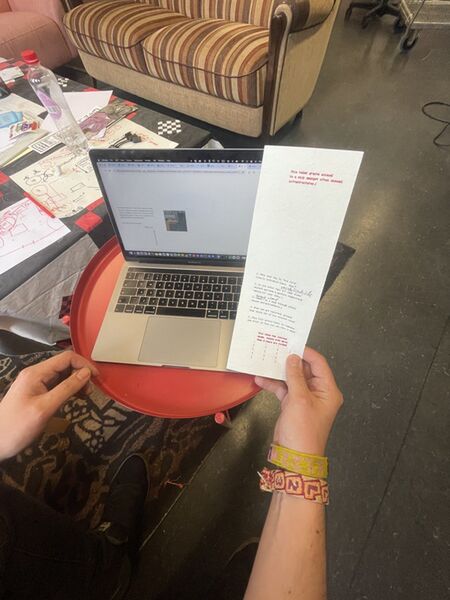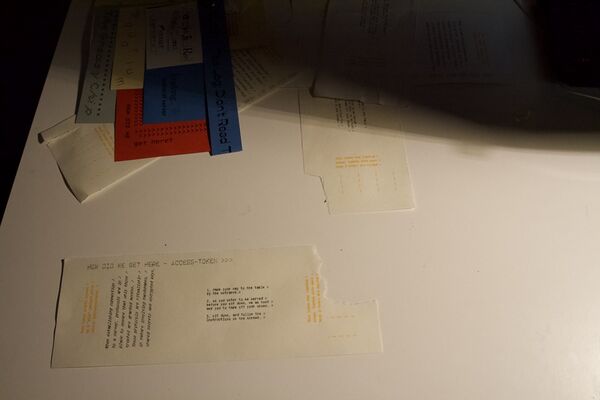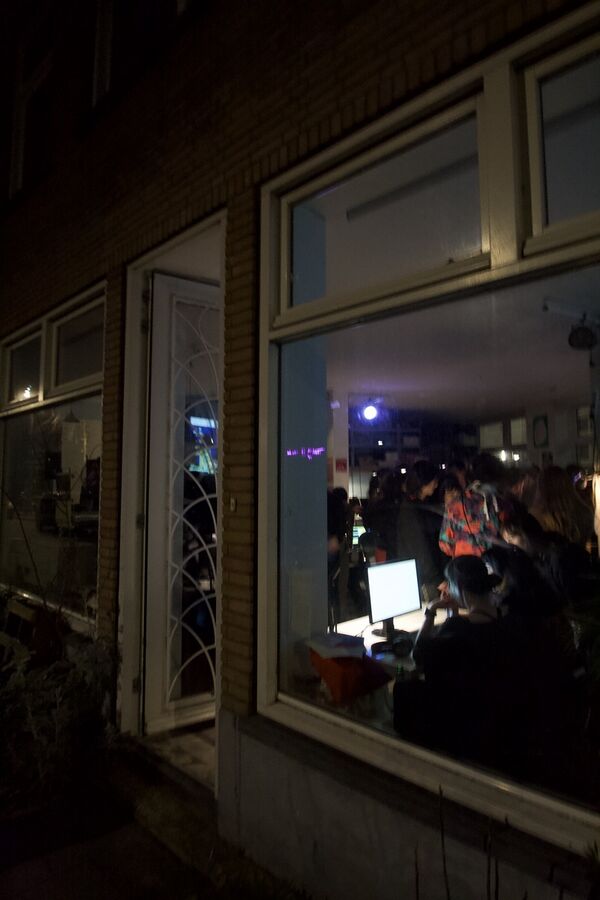User:ØverLørd/Special Issue 23
Personal Notes on Special Issue 23:
Quilting Infrastructures
The point of departure for this special issue was that we wanted to question big tech's presence in our lives. In the current paradigm we are dependent on "cloud services" in order to just about anything. Whether it is communicating with your friends, buying groceries or taking the metro, somewhere along the way you have interact with networked-technologies that transport and store information in the cloud. These technologies are designed to appear seamless and invisible, which conceals the fact that they are very much reliant on the exploitation of labour and resources. take for example datacenters which are currently constructed left and right, but hidden in plain sight, we tried to visit one but they ghosted us <;(, they require massive amounts of electricity and water, and their construction is causing grave planetary damage.
Therefore we have been working with alternative approaches to server-technologies. Artist-, community- or activist-run servers have historically provided the space for collective dreaming and action that can emphasize situadeness and community. By running and maintaining their own servers, they take back the agency over their tools and services, in trust-economies rather monetary ones. Aiming for creating sustianable envirnoments of exchange, instead of a 100% uptime guarantee.
Highlights from SI23:
Editorial services LTD
No-see-um colors
Go away green (also knowns as no-see-um-green) and bye bye blue (also blending blue) are colors popularized by its (dis)appearance Disney Land, where they are used to obfuscate the non-attractive(attractions) infrastructures. Lamp-posts, loudspeakers, vents and fences are amongst the things that are painted these colors in order to blend in, much like military camouflage. [So that the guests don't question the illusion, but rather blissfully and oblivious go on spending their money.]
These colors also have proven useful(to governemnts and big tech maybe?) to conceal the digital infrastructure around us. We have been told that the cloud is infinite, omnipotent and immaterial. Yet enormous amounts of nature succumb at the hand(arm?) of bulldozers and excavators to facilitate data-centres, and as to add insult to injury painted to drown in the ruins(of nature).
If you want to read more about these colors you can check out this wikipedia article:
https://en.wikipedia.org/wiki/Go_Away_Green
And here are some images with colors in action:
https://www.flickr.com/photos/alexanderalzona/46462856765/
Low-mid-high-tech
These thoughts are reactions to some sentiments presented in these two texts:
Ursula K. Leguin, Rant about technology:
https://www.ursulakleguin.com/a-rant-about-technology
Donna Harraway, A cyborg manifesto: https://warwick.ac.uk/fac/arts/english/currentstudents/undergraduate/modules/fictionnownarrativemediaandtheoryinthe21stcentury/manifestly_haraway_----_a_cyborg_manifesto_science_technology_and_socialist-feminism_in_the_....pdf
In the rant about technology, Ursula K. Leguin wants to challenge how main-stream discourses understands technology. She makes a point that in these discourses (related to hard/non-hard sci-fi) seem to neglect the fact that technology not only entails the high-tech, but also the non-high-tech like clothes, paper or language. A point made in the text is that "technology is how a society copes with physical reality", and this coping may entail the clothes that you wear in order to fit in at the new school, or the phone you use to call your loved ones in another country. In other words technology permeates every aspect of life in a (modern) society to some extent.
This blurring between the lines of what is our material world and what is not (in the western late capitalist techno-scientific paradigm), resonates with Donna Harraways articulation of the cyborg in the "a cyborgs manifesto". The myth of the cyborg is used to challenge boundaries between human-animal human(/animal)-machine and ultimately physical-and non physical, which is propelled by (cybernetic) technologies. Again there is this sentiment that expanding our understanding of what technology is, and can be, and how it mediates our material, social and political reality is fundamental in a feminist approach to the cultural understanding of technology.
Collaboration during SI23

Outocome of collective mapping exercise
Decision making
The making of a special issue is a collective effort, a fundamental aspect of such practices is decision making. Special Issue 23 offered a different pace and rhythm than SI22. Whilst SI22's high tempo benefited from the rapid deployment of protocols, SI23 allowed for more mindful cautious decision-making processes. In the beginning of the Trimester we had a work-shop concerning "non-violent communication", which concerns how to solve conflicts effectively. Useful things we focused on during this workshop was how to voice ones needs, and how to be an active listener. When working in groups compromises are inevitable, compromises can hurt if it involves letting go of an idea you have grown attached to.
Another focus during this trimester was different ways to make decisions like majority vote, or consensus. As we learned making consensus in a group of 15 could be demanding, as not everyone would be present at all times, leading to more stretched out decisions, stretching over multiple days to ensure everyone was aware of the proposed idea.
In my personal experience this kind of work is very time and energy-consuming, and has been a big part of the SI23. making something alone is one thing, making something together is something else. This kind of work is not easily documented, but for me has been one of the bigger learning-experiences this trimester. Like any skill knowing how to voice your concerns, or how to formulate and propose a suggestion, requires practice. And all the hours spent in the aquarium conversing with fellow students have been amongst the most demanding and rewarding tasks of this SI.
Mapping & prototypes
Working with a special issue often means coming together to formulate an idea/concept/method, then we diverge and make our own takes on this idea/concept/method, and then coming back together again. During these iterative processes it is important to make sure that a common-ground exist, to ensure continuity and cohesiveness. Good tools for this are making prototypes and mappings. These can be created individually or together with others, and allow for collective imagining.
Making groups
Another way to facilitate for collaboration this SI was the creation of smaller more manageable groups. we had the editorial teams where we freely could explore the thematics and methodologies. The production teams which were concerned with the web-quilt and event as a whole, ensuring that all the different components were cared for. And we had the content-teams which were concerned with the different projects showcased at the event. This structure allowed us to work in different constellations with different people, and new perspectives are usually a good things. At the same time it allowed us to have different focuses at different times, ensuring a wholistic approach to the matters at hand.
It is important to stress that even though we split into different groups, nothing at xpub happens in a vacuum. All ongoing processes inform each other in their proximity in space and mind.
How did we get here
Description of project
The door is a point of access. Walking through the door, guests have a chance to see the processes that take place here to ensure the flow of information that enables our everyday interactions on(off)line. This all happens behind an invisible infrastructure that we want to reveal.
how did we get here? invites you to interact with a website that takes you on a journey through the streets of our city, and welcomes you to our reimagined data center. Aiming for seamfulness by revealing and sharing processes, (re)sources, and tools.
This data center challenges the conditions of serving, by regulating the amount of connections. Thus you need an access token, which will be handed to you by someone who trusts you, to embark on the web journey. These tokens are limited to ensure that the resources are not depleted.
Accesstoken
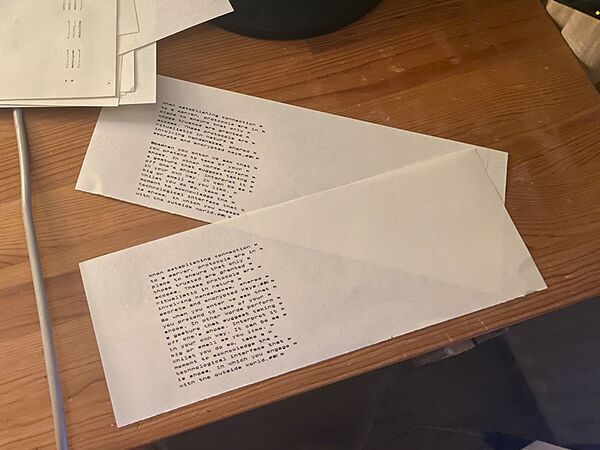
The first prototype conveying the feel of the plot on paper
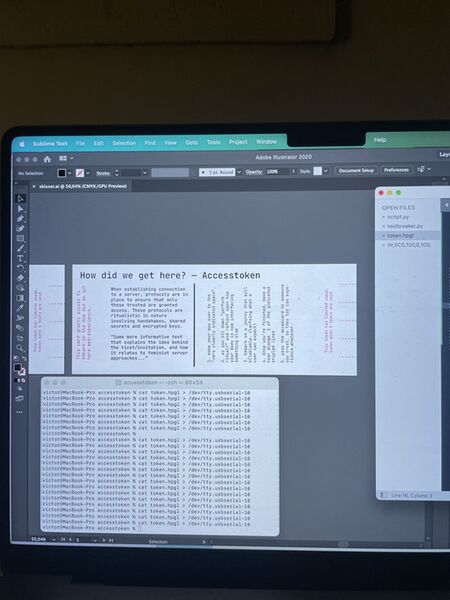
Digital mockup to rapidly experiment with the text on surface
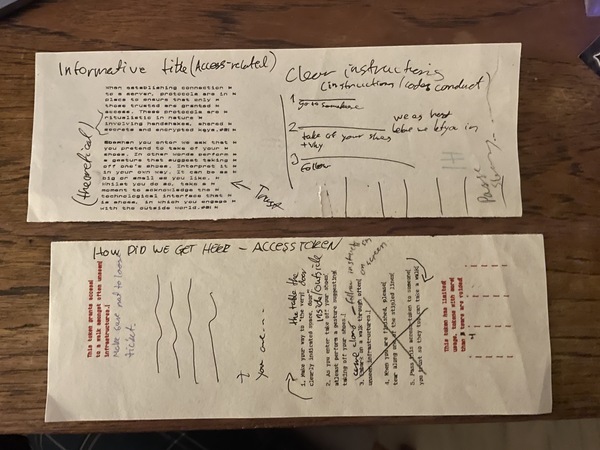
Prototypes are effective tools to rapidly make suggestions
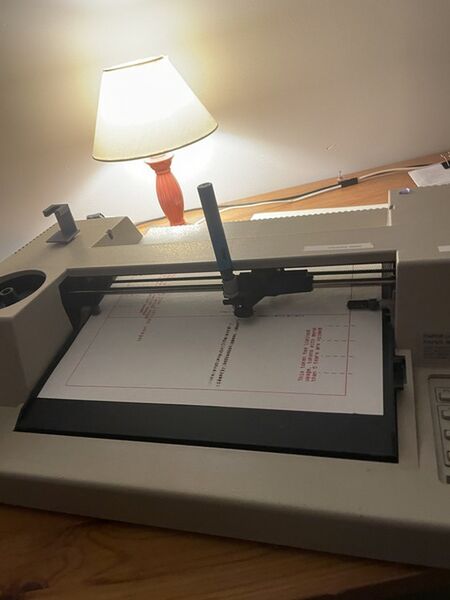
Plotting the prototypes, using guides to work out the layout
hpgl code for access-token
IN;SC0,100,0,100; SR.5,1.2; DT>; LT2,2; PA100 0; PD;PA90,0; PU; PA100,10; PD;PA90,10; PU; PA100,20; PD;PA90,20; PU; PA100,30; PD;PA90,30; PU; PA100,40; PD;PA90,40; PU; DI0,1; PA84,8; LBThis token has limited > PA86,8; LBusage, tokens with more > PA88,8; LBthan 5 tears are voided > PA0,8; LBThis token grants access > PA2,8; LBto a "walk" amongst often > PA4,8; LBunseen infrastructures. > SR.6,1.4; SL0.5; PA11,0; LBWhen establishing connection > PA13.5,0; LBto a server, protocols are in > PA16,0; LBplace to ensure that only those > PA18.5,0; LBtrusted are granted access. > PA21,0; LBThese protocols are ritualistic > PA23.5,0; LBin nature involving handshakes, > PA26,0; LBshared secrets and encrypted keys. > SL0; DI1,0; SR.5,1.2; PA47,28; LB1. Make your way to the table > PA47,26; LBby the entrance.> PA47,22; LB2. As you enter to be served > PA47,20; LBbefore you sit down, we as host > PA47,18; LBask you to take off your shoes. > PA47,14; LB3. sit down, and follow the > PA47,12; LBInstructions on the screen. > SR1,2.4; PA0,43.5; LBHOW DID WE GET HERE - ACCESS-TOKEN >LB>LB>
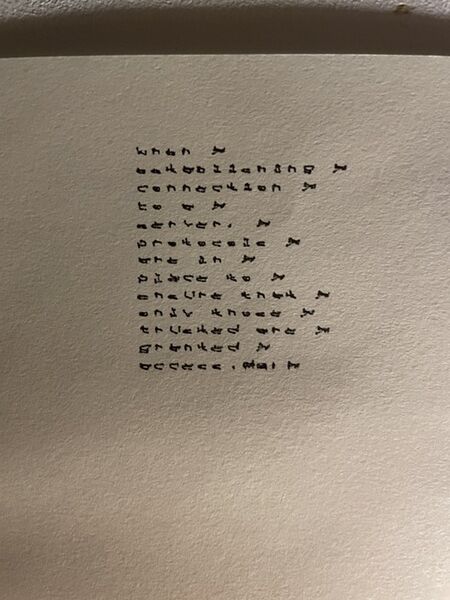
What happens when the pen is not properly attatched
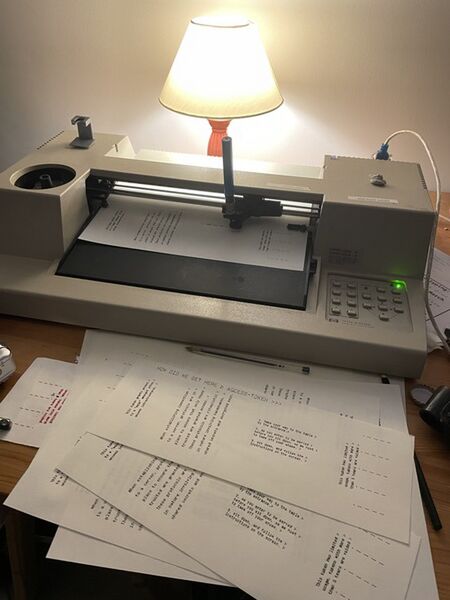
Iterative plotting to tweak layout produces a lot of plots
Last login: Mon Mar 25 11:43:46 on ttys002
victor@MacBook-Pro ~ % cd Desktop/Special\ Issue\ 23/accesstoken
victor@MacBook-Pro accesstoken % ls
cheatsheet.txt skisser.ai token.hpgl web
victor@MacBook-Pro accesstoken % chiplotle
+-----------------------+
| Chiplotle! v.0.4.1 |
+-----------------------+
Scanning serial ports...
Found ports:
/dev/tty.JBLTUNE510BT
/dev/tty.Bluetooth-Incoming-Port
Sniffing for plotters in all serial ports...
Found no plotter connected to any of the serial ports.
Is your plotter on?
chiplotle> exit()
victor@MacBook-Pro accesstoken % chiplotle
+-----------------------+
| Chiplotle! v.0.4.1 |
+-----------------------+
Scanning serial ports...
Found ports:
/dev/tty.JBLTUNE510BT
/dev/tty.Bluetooth-Incoming-Port
/dev/tty.usbserial-110
Sniffing for plotters in all serial ports...
Found plotter 7475A in port /dev/tty.usbserial-110
Instantiated plotter HP7475A in port /dev/tty.usbserial-110:
Drawing limits: (left 0; bottom 0; right 11040; top 7721)
Buffer Size: 512
chiplotle> plotter.write_file('token.hpgl')
chiplotle> plotter.write_file('token.hpgl')
chiplotle> plotter.write_file('token.hpgl')
chiplotle> plotter.write_file('token.hpgl')
chiplotle> plotter.write_file('token.hpgl')
chiplotle> plotter.write_file('token.hpgl')
chiplotle> plotter.write_file('token.hpgl')
chiplotle> plotter.write_file('token.hpgl')
chiplotle> plotter.write_file('token.hpgl')
chiplotle> plotter.write_file('token.hpgl')
chiplotle> plotter.write_file('token.hpgl')
chiplotle> plotter.write_file('token.hpgl')
chiplotle> plotter.write_file('token.hpgl')
chiplotle> plotter.write_file('token.hpgl')
chiplotle>
[Gjenopprettet 26. mar. 2024, 23:37:27]
Last login: Tue Mar 26 23:37:22 on console
victor@MacBook-Pro accesstoken % ls
cheatsheet.txt skisser.ai token.hpgl web
victor@MacBook-Pro accesstoken % chiplotle
+-----------------------+
| Chiplotle! v.0.4.1 |
+-----------------------+
Scanning serial ports...
Found ports:
/dev/tty.usbserial-110
Sniffing for plotters in all serial ports...
Found plotter 7475A in port /dev/tty.usbserial-110
Instantiated plotter HP7475A in port /dev/tty.usbserial-110:
Drawing limits: (left 0; bottom 0; right 11040; top 7721)
Buffer Size: 512
chiplotle> plotter.write_file('token.hpgl')
chiplotle> plotter.write_file('token.hpgl')
chiplotle> plotter.write_file('token.hpgl')
chiplotle> plotter.write_file('token.hpgl')
chiplotle>
https://hub.xpub.nl/chopchop/~v/hdwgh/index.html
In this web journey you navigate text and image that explores often unseen infrastructures. As an important aspect of this project was working with materiality of "post-"digital infrastructures, this is also reflected in the formatting of the website, as it embraces "minimally"-styled, letting the hyopertext be the star.
The accesstoken can also be understood as a part of this web journey as the web and the print are in dialogue, this way we stress the fact that there is no clear boundries of what is digitial and what is not.
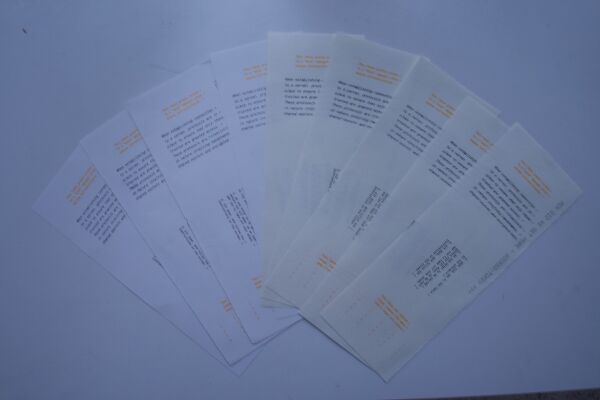
Limited access-tokens with limited usage
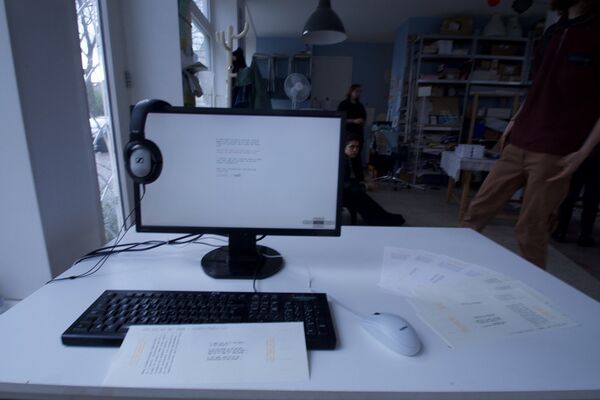
The physical access-token is continued and part of the html/css/js
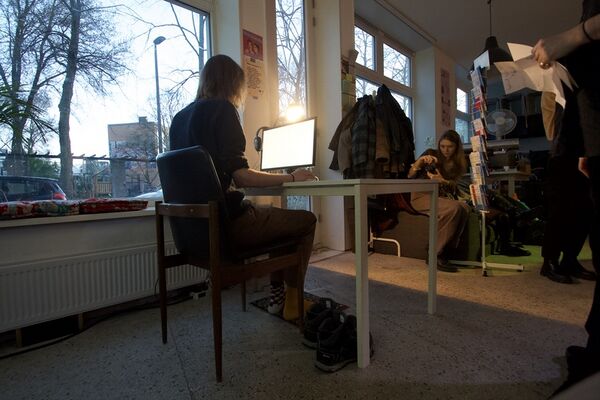
The participant is asked to take their shoes off
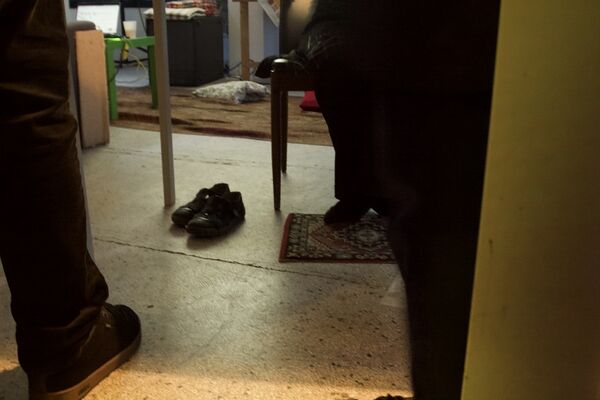
A mat is provided to facilitate for unwearing shoes
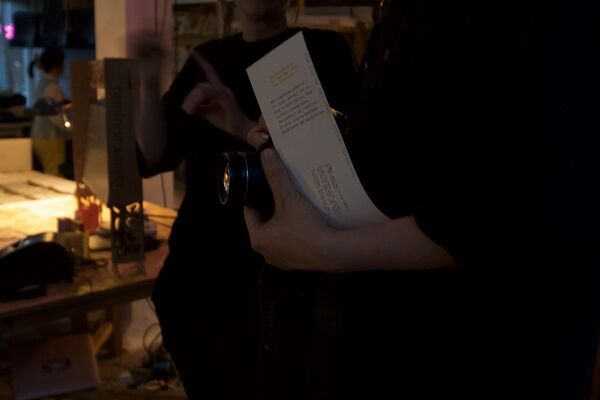
The token was intended to be exchanged between participants so that they manage the access

